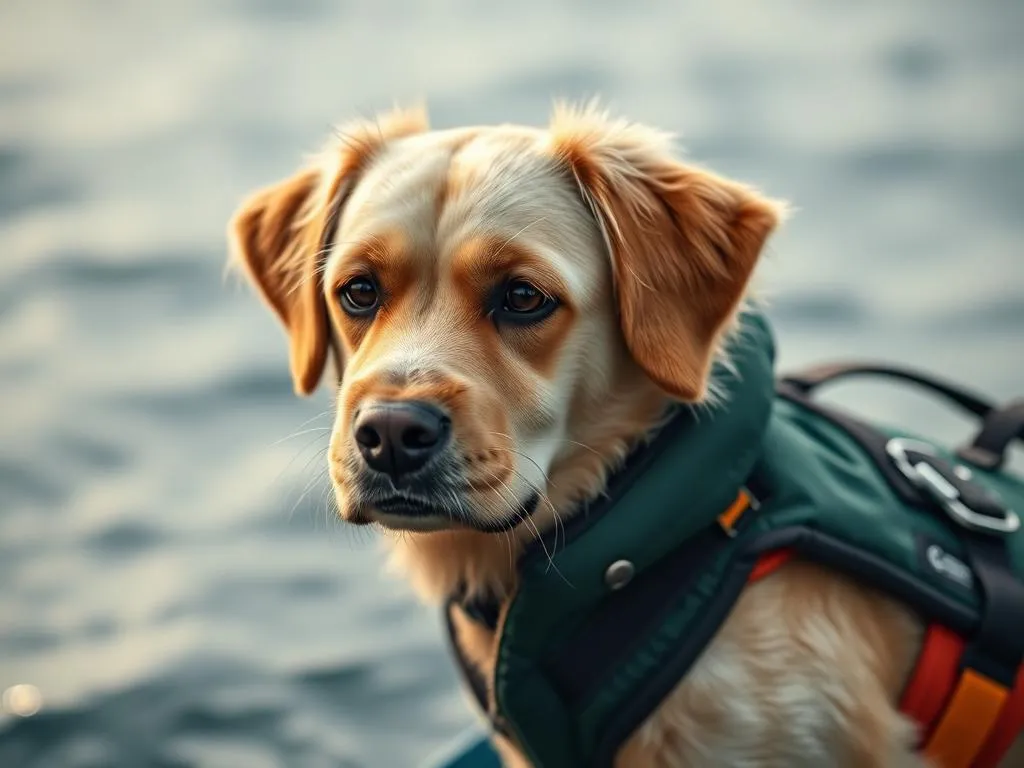
When it comes to dog health care, ensuring the safety of our furry friends during water activities is just as important as their overall physical and mental well-being. As dog owners, we often find ourselves wondering if our pets really need life jackets when swimming or playing near water. This question becomes crucial, especially when considering the inherent risks associated with water activities for dogs.
Water Safety for Dogs
The Risks of Water Activities
While many dogs are natural swimmers, water activities do come with risks. Drowning is the most severe danger, particularly for dogs that are not strong swimmers or are unfamiliar with water. Other risks include hypothermia, especially in cold water, and injuries from sharp objects hidden beneath the surface.
Statistics show that thousands of dogs face water-related accidents each year, emphasizing the need for precautionary measures when engaging in water activities. Understanding these risks is crucial for any dog owner who plans to take their pet near water.
Signs of Distress in Dogs While Swimming
Recognizing when your dog is struggling in the water can be lifesaving. Watch for signs such as:
- Panic swimming: Your dog may paddle frantically without making forward progress.
- Excessive barking or whining: Vocalizations can indicate discomfort or distress.
- Submerging: If your dog keeps disappearing underwater, they may need assistance.
- Fatigue: Dogs may start to slow down or struggle to keep their head above water.
Being aware of these behavioral signs will help you intervene before a situation escalates.
Life Jackets for Dogs
What is a Dog Life Jacket?
A dog life jacket is a flotation device designed specifically for dogs. These jackets provide buoyancy and support, making it easier for dogs to stay afloat while swimming. Key features to look for in a dog life jacket include:
- Adjustable straps: Ensures a snug fit for safety.
- Buoyant material: Lightweight foam that provides adequate flotation.
- Reflective strips: Enhances visibility in low light conditions.
- Handle on top: Allows for easy retrieval from the water.
Investing in a quality life jacket can significantly enhance your dog’s safety during water activities.
Do Dogs Need Life Jackets?
The answer to whether dogs need life jackets is multifaceted. While some breeds, such as Labrador Retrievers and Golden Retrievers, are natural swimmers, others, like Bulldogs and Dachshunds, may not be as adept in the water. Even strong swimmers can benefit from wearing a life jacket, especially in unpredictable water conditions, such as strong currents or waves.
Additionally, factors like age and health should be considered. Older dogs or those with health issues may find swimming more taxing and thus benefit greatly from the added buoyancy and support a life jacket provides. In essence, it’s better to be safe than sorry, and using a life jacket can provide peace of mind for both you and your dog.
Choosing the Right Life Jacket
When selecting a life jacket for your dog, consider the following:
- Size and fit: Measure your dog’s girth and length to find a suitable size. A life jacket should fit snugly but not restrict movement.
- Material and buoyancy features: Look for durable, water-resistant materials and sufficient buoyancy to keep your dog afloat.
- Reputable brands: Research and read reviews to find trusted brands known for their quality and safety features.
By taking the time to choose the right life jacket, you can significantly improve your dog’s safety during water activities.
Training Your Dog for Water Safety
Introduction to Water Training
Preparing your dog for water activities is essential for their safety and enjoyment. Start by introducing your dog to water gradually. Begin with shallow areas where they can comfortably wade in and out. Allow them to explore and get accustomed to the sensation of water.
Incorporating positive reinforcement, such as treats and praise, can help create a positive association with water. This training can make a huge difference in their confidence and comfort level when swimming.
Teaching Dogs to Wear Life Jackets
Introducing your dog to a life jacket is a straightforward process. Follow these steps to ensure comfort and safety:
- Familiarization: Allow your dog to sniff and explore the life jacket before putting it on.
- Dress rehearsal: Gently place the life jacket on your dog, securing it without making it too tight. Let them wear it for short durations indoors to get used to the sensation.
- Positive reinforcement: Reward your dog with treats and praise when they wear the jacket without fuss.
- Gradual exposure: Start by taking them to shallow water with the life jacket on, gradually progressing to deeper water as they become more comfortable.
With patience and encouragement, your dog will learn to accept and even enjoy wearing their life jacket.
Best Practices for Dog Water Activities
Supervision and Environment
Constant supervision is vital when your dog is in or near water. Always keep an eye on them, even if they are seasoned swimmers. Choose safe environments for dog swimming, such as dog-friendly beaches, lakes, or pools. Avoid areas with strong currents, debris, or steep drop-offs that could pose risks to your dog.
Health Considerations Post-Water Activities
After a fun day in the water, it’s essential to monitor your dog for signs of fatigue or stress. Watch for excessive panting, lethargy, or difficulty moving. These may indicate that your dog has overexerted themselves.
Rinsing off your dog after swimming in saltwater or chlorinated pools is crucial to prevent skin irritation or infections. Make sure to dry their ears thoroughly to avoid ear infections, a common issue for dogs that swim frequently.
Emergency Preparedness
Being prepared for emergencies can save your dog’s life. Familiarize yourself with basic first aid techniques for dogs, particularly those related to water incidents. Knowing how to perform CPR or how to handle a dog that has ingested water can be invaluable in a crisis.
Keep a dog first aid kit handy when engaging in water activities. This kit should include items like bandages, antiseptic wipes, and any necessary medications.
Conclusion
Dog health care encompasses many aspects, but ensuring the safety of our furry companions during water activities is paramount. From understanding the risks associated with water to recognizing the importance of life jackets, every dog owner should prioritize their pet’s safety. Investing in proper safety gear, training, and awareness can make all the difference in enjoying water activities with your beloved dog.
If you’ve enjoyed this discussion or have experiences to share about your dog’s water safety, feel free to engage with others in the community. Together, we can create safe and enjoyable experiences for our four-legged friends.









